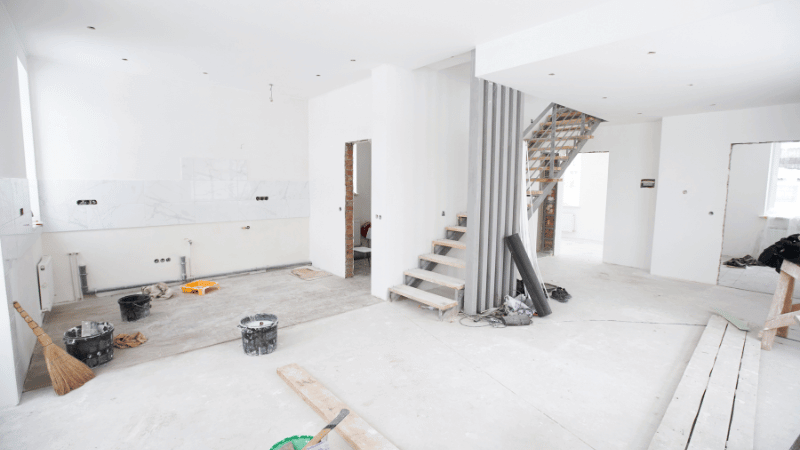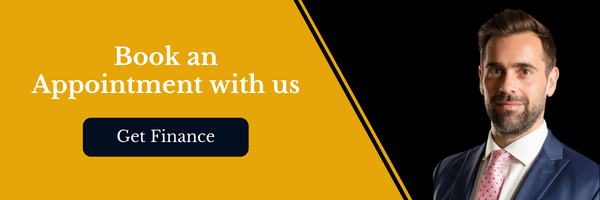Categories
Applying for Retrospective Planning Permission: Is it Worth the Risk?

Retrospective planning permission is a common occurrence in the property development world. You may have made an honest mistake during building works and only realised afterwards you need permission. Or you may have discovered you can’t sell your house unless it matches the land registry records.
Or, the local authority may have discovered (or been notified by an unhappy neighbour) that your building doesn’t comply with local regulations - and they’ve ordered you to apply for planning permission retrospectively.
With uncertainty about house prices and the high cost of moving home, many homeowners are choosing to improve rather than move – with loft extensions and kitchen extensions the favourite refurbishment choices.
But is it better to get planning permission before or after you do the building work?
Let’s find out.
Skip to:
Why don’t people apply for planning permission first?
Is there a statute of limitations on planning permission?
Why do people need to apply for permission retrospectively?
What happens if my retrospective planning application is turned down?
What if I don’t comply with the planning authority’s order?
Arrange the finance you need for an extension or conversion

What is Retrospective Planning Permission?
Retrospective planning permission refers to seeking approval for a development or alteration to a property after the work has already been carried out without prior permission from the local planning authority. It essentially involves seeking forgiveness rather than permission for changes that have already been made.
This process can be complex and may involve submitting detailed plans, assessments, and justifications for unauthorised work. The decision to grant retrospective planning permission ultimately rests with the local planning authority. They may consider factors such as the impact on the surrounding area, compliance with regulations, and the reasons for the unauthorised development.
Why Don’t People Apply for Planning Permission First?
There are many reasons why homeowners decide to make changes to their property without applying for planning permission beforehand, but here are the three most common:

"I didn’t realise planning rules applied"
Some people aren’t aware of the rules or regulations in their area when it comes to adding to or changing their homes, so they don’t even think about permission from the local authority.

"It takes too long"
Usually, when people want to make changes to their homes, they’ve got a costing from a builder, they’ve got their finance arranged, and they’re looking for a window of time when their builder is available and the weather is halfway decent.
Applying for planning permission may take eight weeks – or up to 13 weeks with complicated cases. Some people just don’t want to miss the opportunity to get started. Or they have a vision that they don’t want to compromise.

"I hoped no one would notice"
If you’re making relatively unobtrusive changes or, for example, converting a barn on your own land, you might hope that no one will object to what you’ve done for four years, by which time you can apply for default planning permission.
Is There a Statute of Limitations on Planning Permission?
You're probably thinking of the "4 Year Rule" or the "10 Year Rule".
These relate to applying for a Certificate of Lawfulness for your unauthorised use or development. This is a less time-consuming route than applying for planning permission which requires strict compliance with national and local standards.
The 4 Year Rule allows you to apply for a certificate stating that your use or development is now lawful: not through compliance with space standards but through the passage of time.
You will not win a Certificate of Lawfulness just by hiding your property changes behind a big hedge for four years: you need to be able to demonstrate that people have been aware of the changes and there have been no objections. For example, you may need to submit utility bills for the past four years, or tenancy agreements, or sworn affidavits.
The 4 Year Rule applies to Class C3 houses and flats after four years of continuous use. The 10 Year Rule applies to other uses, such as C4 Houses in Multiple Occupation.
But there are situations where action can be taken even after these time limits are up, in accordance with the Town and Country Planning Act.
Why Do People Need to Apply for Permission Retrospectively?
The most common reason property owners apply for planning permission after their building work is completed is that they’ve been approached by the local authority and asked to disclose the work undertaken on their house.
Local authorities are responsible for enforcing planning laws. They may have noticed the changes that have been made, or someone may have notified them.
Or, a homeowner may have realised they’ve made a genuine mistake and be wanting to put it right.
What Happens if My Retrospective Planning Application is Turned Down?
- Your local authority may ask for all work to be stopped immediately.
- They may demand you reverse any changes made and return things to how they were originally.
- You may be ordered to reconstruct any buildings that have been demolished.
There’s usually a time limit to these orders ("requests"). It's possible to appeal if you believe your works have been carried out according to regulation, but usually, there’s not much you can do to change the planning authority’s decision.
What if I Don’t Comply With the Planning Authority’s Order?
If you fail to meet the requirements within the time limit, you can face criminal charges.
It’s also almost impossible to get any kind of insurance after retroactive planning permission has been denied, and your current home insurance will be invalidated.

So… Is it Worth it?
The simple answer? No.
Not realistically, anyway. While it could save time if you’re granted permission retrospectively, it’s a gamble.
You'll probably have to employ a professional planning consultant to advise you on how to argue your case. And if you can’t afford the substantial reinstatement costs within the time limit, you’re at risk of a criminal record.
Playing by the rules means you won’t have to spend money reversing building works you weren’t allowed to make in the first place!
Arranging Finance for an Extension or Conversion
As a whole of market broker, we have relationships with specialist lenders, private banks, family offices and wealth managers who are willing to fund both light and heavy refurbishment projects.
Our specialist brokers can advise you on what type of financial solution you'll need and can guide you through the process of securing funding.
Thanks to our established relationships with property refurbishment finance lenders across the market, we can quickly find you the best deals currently available, no matter what kind of refurbishment project you are undertaking.
To see what we can do for you, call us at 0203 900 3040 or book a consultation below.










.png)

